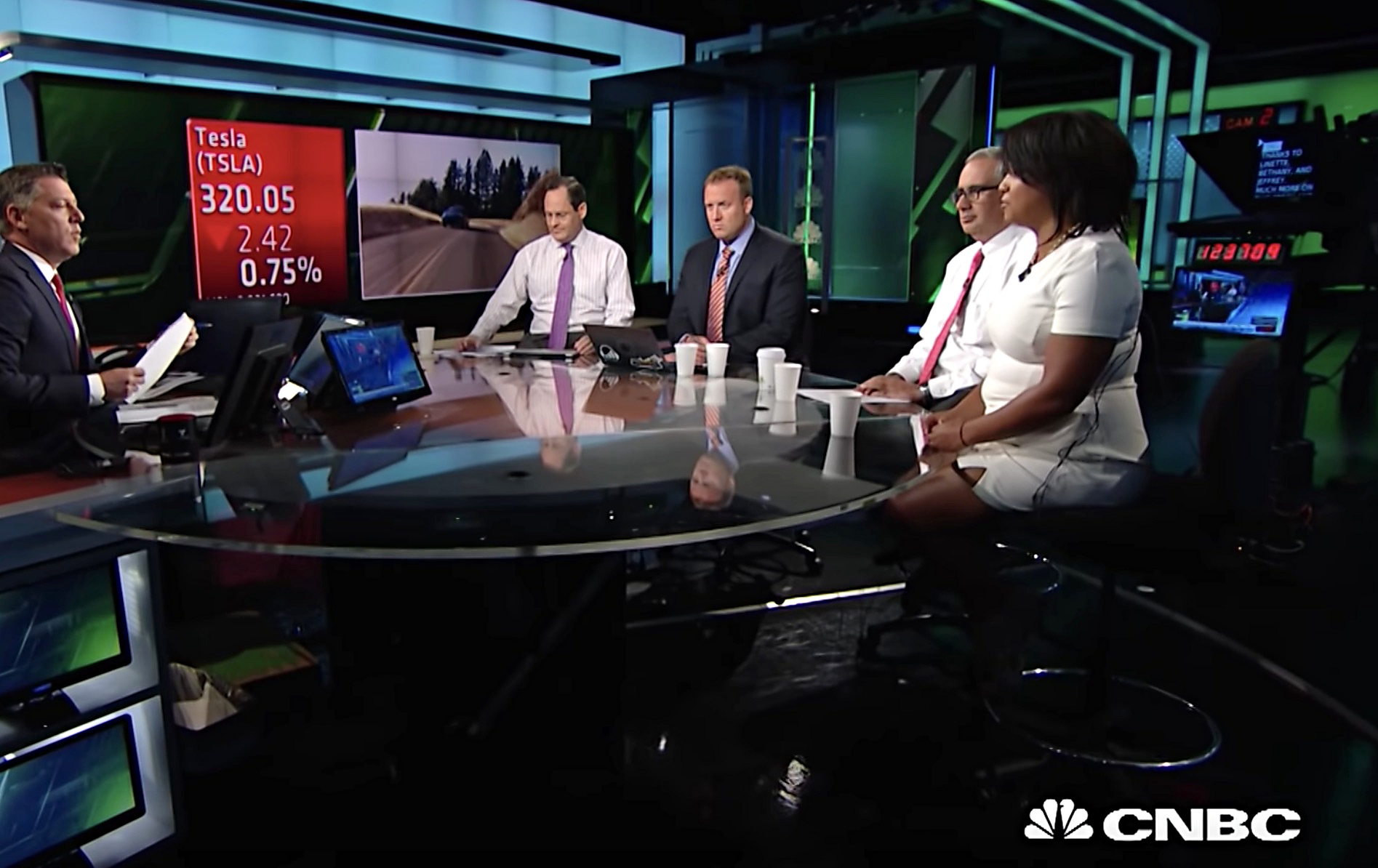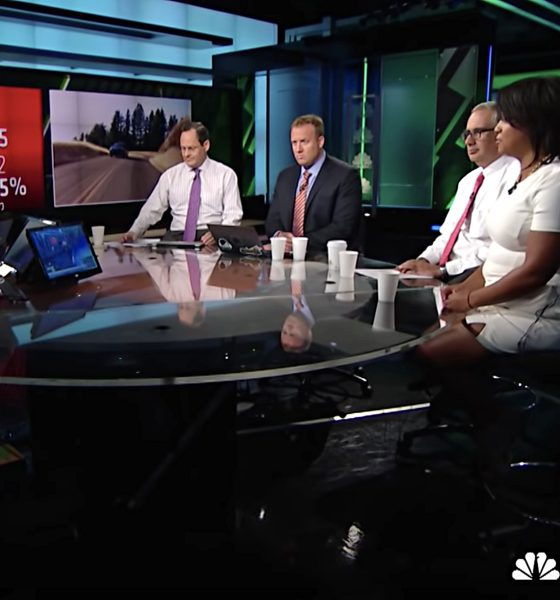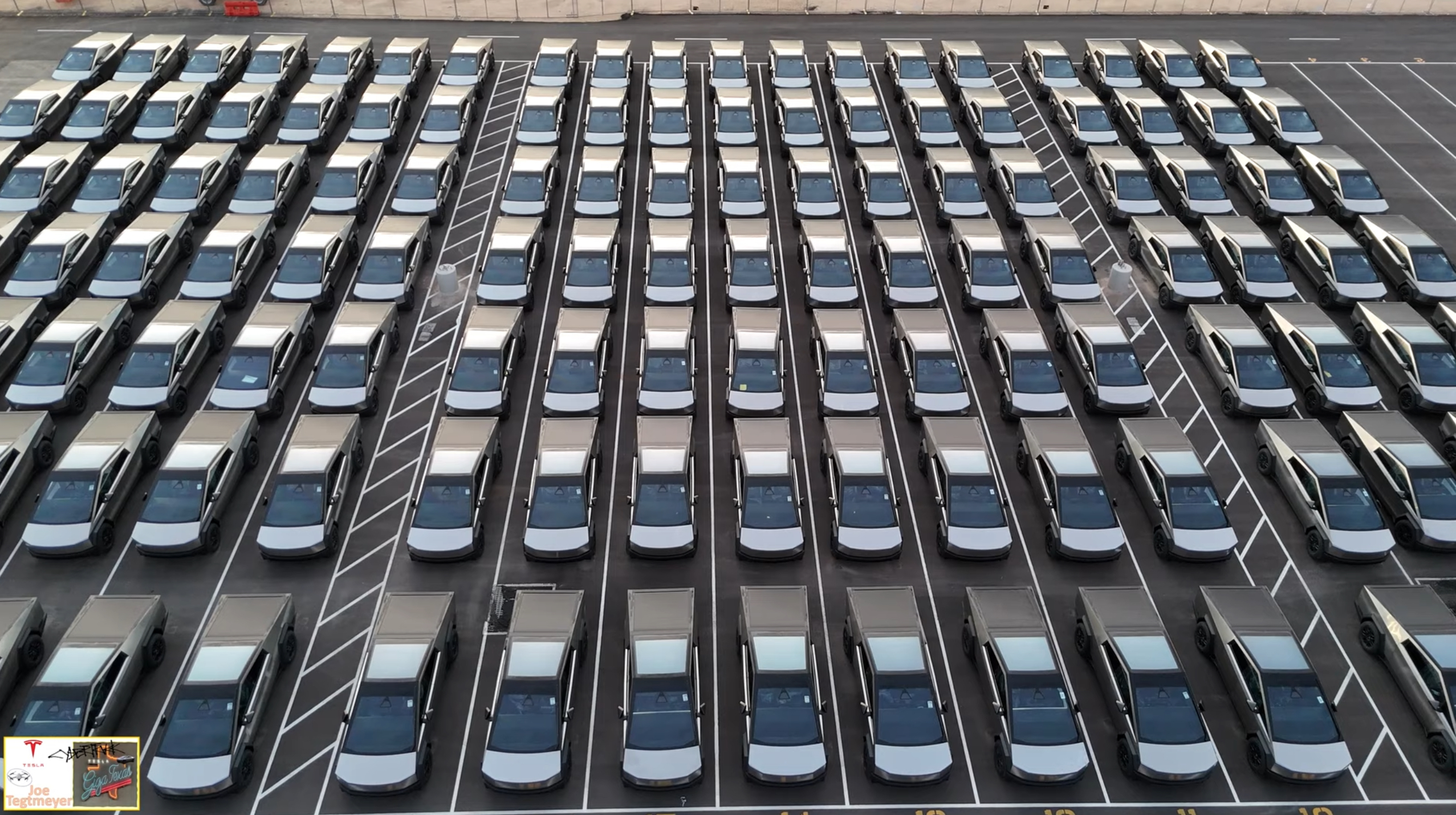

Investor's Corner
Journalist in Twitter scuffle with Tesla’s Elon Musk spills details to CNBC
A journalist who recently caught the ire of CEO Elon Musk on Twitter defended her coverage in a recent interview. During a segment on CNBC‘s Halftime Report, Business Insider senior finance correspondent Linette Lopez told her side of the story, confirming that former Tesla employee and alleged saboteur Martin Tripp did provide her with information, and denying any financial connections with noted Tesla short-seller Jim Chanos.
“It’s up to shareholders to decide whether or the CEO of a $50 million (sic) company should spend his time yelling at reporters on Twitter. What my reporting indicates is that the mission of Tesla is not really quite in line with the manufacturing of Tesla. Elon Musk has, for years, a high-quality car that is environmentally-friendly and what we’re seeing coming out of both Tesla factories is not exactly that,” Lopez said.
Lopez was joined in her segment in CNBC‘s Halftime Report by Bethany McLean of Vanity Fair and Yale’s Jeffrey Sonnenberg. McLean, who is noted as one of the reporters who was involved in the Enron investigations, stated that Musk’s actions against Lopez on Twitter are uncharacteristic of a CEO that is confident of his company’s numbers. McLean also commended the Business Insider reporter for following her story.
“I think Musk should be ashamed of himself and shareholders should think about running for the hills. Given the ugliness on Twitter where somebody like Elon Musk starts to lead a pack and the pack takes that as an excuse to behave in an extremely ugly manner, and I think that brings out the worst in human nature. Even if you’re right and you’re on to something, it’s pretty hard to sit on the other side of that and not have it get to you. So, I commend Linette for her courage,” McLean said.
Ultimately, the Business Insider correspondent concluded that she would continue covering the electric car maker in her reports. Lopez also noted that she still has sources, and she still has stories to tell.
“Of course, there’s no question. I will continue to cover Tesla. I will continue to work very hard. I am not out of sourcing, and I am not out of stories,” Lopez said.
Linette Lopez has been covering Tesla for a while now, and a good number of her articles are pointedly negative. Articles such as “Elon Musk doesn’t care about you” and “Internal documents reveal Tesla is blowing through an insane amount of raw material and cash to make Model 3s, and production is still a nightmare,” after all, invoke an air of subjectivity. Her favorable articles featuring Tesla’s most notable short-seller, Jim Chanos, also gives an impression that she already has a clear stance on Tesla.
Nevertheless, McLean’s statements about Twitter bringing out the ugly side of human beings is pretty much on target as well. Some members of the online community, after all, have resorted to below-the-belt attacks on Lopez, and that is not okay. Musk is no stranger to online hate, either, as proven by the criticism he received after his team built a mini-submarine for the stranded Wild Boar soccer team in Thailand. Musk received a lot of flak for allegedly being a “narcissist” and attempting to take credit away from the divers who rescued the children and their coach. Recent Twitter updates by Musk, however, proved that the team conducting the rescue operations were in active communication with the Tesla CEO. Social media posts from Thailand also confirmed that they appreciated Musk and his team’s efforts to help (the minisub is now part of the country’s rescue equipment), but the vitriol is still there.
Ultimately, if there is one thing that Musk could to silence his critics and prove members of the media like Lopez and McClean wrong, it would be through Tesla’s numbers in the quarters and years to come. If the numbers at the end of Q2 2018 and its recent strategies with the Model 3, such as its new test drive program and its 5-minute Sign & Drive delivery process are any indication, it seems like Tesla is now actively fighting critics with its results. With Tesla expecting China’s Gigafactory 3 to begin vehicle production within two years of the facility’s construction, the time might soon come when Elon Musk would just have to sit back and let his company’s numbers do the talking.
Watch a part of Linette Lopez’s segment in CNBC‘s Halftime Report in the video below.

Investor's Corner
Tesla analyst realizes one big thing about the stock: deliveries are losing importance

Tesla analyst Dan Levy of Barclays realized one big thing about the stock moving into 2026: vehicle deliveries are losing importance.
As a new era of Tesla seems to be on the horizon, the concern about vehicle deliveries and annual growth seems to be fading, at least according to many investors.
Even CEO Elon Musk has implied at times that the automotive side, as a whole, will only make up a small percentage of Tesla’s total valuation, as Optimus and AI begin to shine with importance.
He said in April:
“The future of the company is fundamentally based on large-scale autonomous cars and large-scale and large volume, vast numbers of autonomous humanoid robots.”
Almost all of Tesla’s value long-term will be from AI & robots, both vehicle & humanoid
— Elon Musk (@elonmusk) September 11, 2023
Levy wrote in a note to investors that Tesla’s Q4 delivery figures “likely won’t matter for the stock.” Barclays said in the note that it expects deliveries to be “soft” for the quarter.
In years past, Tesla analysts, investors, and fans were focused on automotive growth.
Cars were truly the biggest thing the stock had to offer: Tesla was a growing automotive company with a lot of prowess in AI and software, but deliveries held the most impact, along with vehicle pricing. These types of things had huge impacts on the stock years ago.
In fact, several large swings occurred because of Tesla either beating or missing delivery estimates:
- January 3, 2022: +13.53%, record deliveries at the time
- January 3, 2023: -12.24%, missed deliveries
- July 2, 2024: +10.20%, beat delivery expectations
- October 3, 2022: -8.61%, sharp miss due to Shanghai factory shutdown
- July 2, 2020: +7.95%, topped low COVID-era expectations with sizeable beat on deliveries
It has become more apparent over the past few quarters that delivery estimates have significantly less focus from investors, who are instead looking for progress in AI, Optimus, Cybercab, and other projects.
These things are the future of the company, and although Tesla will always sell cars, the stock is more impacted by the software the vehicle is running, and not necessarily the vehicle itself.
Investor's Corner
SpaceX IPO is coming, CEO Elon Musk confirms
However, it appears Musk is ready for SpaceX to go public, as Ars Technica Senior Space Editor Eric Berger wrote an op-ed that indicated he thought SpaceX would go public soon. Musk replied, basically confirming it.

Elon Musk confirmed through a post on X that a SpaceX initial public offering (IPO) is on the way after hinting at it several times earlier this year.
It also comes one day after Bloomberg reported that SpaceX was aiming for a valuation of $1.5 trillion, adding that it wanted to raise $30 billion.
Musk has been transparent for most of the year that he wanted to try to figure out a way to get Tesla shareholders to invest in SpaceX, giving them access to the stock.
He has also recognized the issues of having a public stock, like litigation exposure, quarterly reporting pressures, and other inconveniences.
However, it appears Musk is ready for SpaceX to go public, as Ars Technica Senior Space Editor Eric Berger wrote an op-ed that indicated he thought SpaceX would go public soon.
Musk replied, basically confirming it:
As usual, Eric is accurate
— Elon Musk (@elonmusk) December 10, 2025
Berger believes the IPO would help support the need for $30 billion or more in capital needed to fund AI integration projects, such as space-based data centers and lunar satellite factories. Musk confirmed recently that SpaceX “will be doing” data centers in orbit.
AI appears to be a “key part” of SpaceX getting to Musk, Berger also wrote. When writing about whether or not Optimus is a viable project and product for the company, he says that none of that matters. Musk thinks it is, and that’s all that matters.
It seems like Musk has certainly mulled something this big for a very long time, and the idea of taking SpaceX public is not just likely; it is necessary for the company to get to Mars.
The details of when SpaceX will finally hit that public status are not known. Many of the reports that came out over the past few days indicate it would happen in 2026, so sooner rather than later.
But there are a lot of things on Musk’s plate early next year, especially with Cybercab production, the potential launch of Unsupervised Full Self-Driving, and the Roadster unveiling, all planned for Q1.
Investor's Corner
Tesla Full Self-Driving statistic impresses Wall Street firm: ‘Very close to unsupervised’
The data shows there was a significant jump in miles traveled between interventions as Tesla transitioned drivers to v14.1 back in October. The FSD Community Tracker saw a jump from 441 miles to over 9,200 miles, the most significant improvement in four years.

Tesla Full Self-Driving performance and statistics continue to impress everyone, from retail investors to Wall Street firms. However, one analyst believes Tesla’s driving suite is “very close” to achieving unsupervised self-driving.
On Tuesday, Piper Sandler analyst Alexander Potter said that Tesla’s recent launch of Full Self-Driving version 14 increased the number of miles traveled between interventions by a drastic margin, based on data compiled by a Full Self-Driving Community Tracker.
🚨 Piper Sandler reiterated its Overweight rating and $500 PT on Tesla $TSLA stock
Analyst Alexander Potter said FSD is near full autonomy and latest versions showed the largest improvement in disengagements, from 440 miles to 9,200 miles between critical interventions pic.twitter.com/u4WCLfZcA9
— TESLARATI (@Teslarati) December 9, 2025
The data shows there was a significant jump in miles traveled between interventions as Tesla transitioned drivers to v14.1 back in October. The FSD Community Tracker saw a jump from 441 miles to over 9,200 miles, the most significant improvement in four years.
Interestingly, there was a slight dip in the miles traveled between interventions with the release of v14.2. Piper Sandler said investor interest in FSD has increased.
Full Self-Driving has displayed several improvements with v14, including the introduction of Arrival Options that allow specific parking situations to be chosen by the driver prior to arriving at the destination. Owners can choose from Street Parking, Parking Garages, Parking Lots, Chargers, and Driveways.
Additionally, the overall improvements in performance from v13 have been evident through smoother operation, fewer mistakes during routine operation, and a more refined decision-making process.
Early versions of v14 exhibited stuttering and brake stabbing, but Tesla did a great job of confronting the issue and eliminating it altogether with the release of v14.2.
Tesla CEO Elon Musk also recently stated that the current v14.2 FSD suite is also less restrictive with drivers looking at their phones, which has caused some controversy within the community.
Although we tested it and found there were fewer nudges by the driver monitoring system to push eyes back to the road, we still would not recommend it due to laws and regulations.
Tesla Full Self-Driving v14.2.1 texting and driving: we tested it
With that being said, FSD is improving significantly with each larger rollout, and Musk believes the final piece of the puzzle will be unveiled with FSD v14.3, which could come later this year or early in 2026.
Piper Sandler reaffirmed its $500 price target on Tesla shares, as well as its ‘Overweight’ rating.








